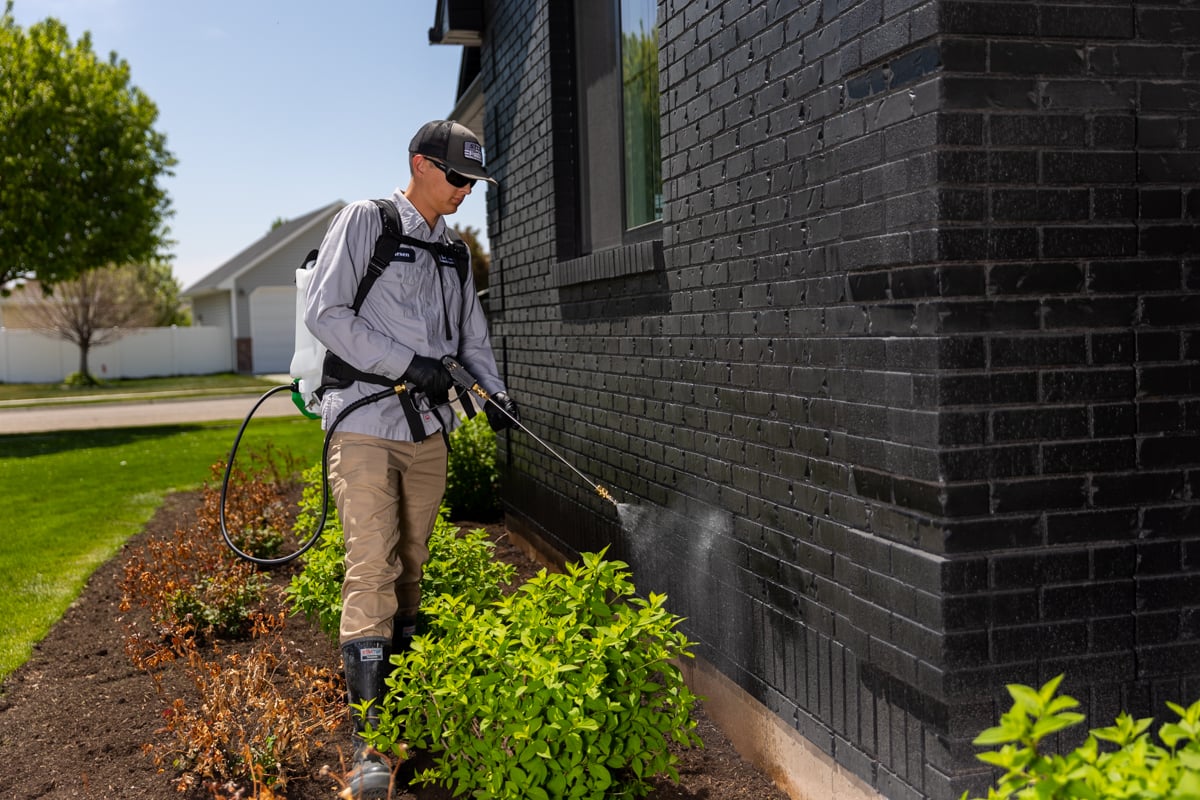Bed Insect Therapy Failure: Contrasting Chemical Vs. Non-Chemical Solutions
In the world of bug control, specifically when taking care of the persistent concern of bed bugs, the choice in between chemical and non-chemical therapy remedies can be a critical one. Both techniques supply distinct benefits and drawbacks, affecting variables such as effectiveness, security factors to consider, and total cost. By analyzing the nuanced information of each approach, a more clear understanding of which path to pursue in resolving a bed pest infestation can be achieved.
Performance of Chemical Therapies
Chemical therapies for bed pest problems have been widely recognized for their fast and potent effectiveness in getting rid of these pests. When taking into consideration the efficiency of chemical treatments, it is essential to recognize that they can give a fast and comprehensive solution to a bed insect trouble. Specialist pest control operators commonly depend on pesticides to target bed insects at different stages of their life cycle, including fairies, eggs, and adults. These chemicals generally work by disrupting the bed pests' anxious system, leading to paralysis and ultimate fatality.
Moreover, chemical therapies have the advantage of offering residual impacts, implying that they can proceed to get rid of bed bugs even after the initial application. This residual activity is specifically helpful in combating any kind of possible re-infestations. Additionally, the rapid action of chemical therapies can bring alleviation to people facing severe bed pest invasions, allowing them to gain back control of their living areas quickly.
Safety Worry About Chemical Solutions
One essential facet that requires mindful factor to consider when making use of chemical services for bed bug treatment is making certain the safety and security of owners and the atmosphere. While chemical treatments can be effective in eliminating bed bugs, they may position dangers otherwise managed effectively. One of the key safety interest in chemical services is the potential damage they can trigger to human wellness. Direct exposure to particular chemicals utilized in bed pest treatments can cause respiratory system concerns, skin irritability, or other damaging responses, specifically in people with pre-existing conditions or level of sensitivities. Additionally, improper application or dosage of chemical pesticides can result in toxic deposits sticking around in the treated location, posing long-term wellness risks to passengers.
Moreover, the environmental influence of chemical services is one more significant consideration. Some chemicals utilized in bed insect treatments may be damaging to advantageous bugs, wildlife, and ecological communities if they seep right into the dirt or water supply. It is important to use chemical treatments judiciously, following safety standards, and thinking about much less harmful alternatives to reduce these risks and ensure the risk-free and efficient administration of bed insect invasions.
Benefits of Non-Chemical Approaches
Taking into consideration the potential safety worries and ecological effect associated with chemical options for bed bug therapy, exploring non-chemical approaches presents an encouraging option with numerous distinct benefits. Non-chemical therapies are ecologically friendly, as they do not add to air or water contamination, making them a lasting choice for article insect control.
Furthermore, non-chemical options can be effective in targeting bed bugs, including hard-to-reach locations where chemical treatments may not penetrate - A1 bed bug treatment in charlotte. Approaches such as heat treatment, vacuuming, steam cleansing, and cushion coverings give thorough elimination without the usage of dangerous chemicals.
Limitations of Non-Chemical Treatments

Furthermore, non-chemical treatments commonly need numerous applications to attain successful removal. This can be taxing and might not constantly guarantee total removal of all bed pests and their eggs, particularly in surprise or hard-to-reach areas.
Furthermore, the success of non-chemical treatments greatly depends on proper implementation and thoroughness, which can be testing for people without expert experience. Inadequate application of non-chemical approaches may cause insufficient look at these guys removal, bring about persistent problems and the need for extra treatments.
Consequently, while non-chemical treatments have their advantages, it is vital to acknowledge these limitations and consider them when identifying one of the most reliable method for managing bed insect problems.
Expense Comparison: Chemical Vs. Non-Chemical Options
Given the constraints linked with non-chemical therapies, a vital element to review in the context of bed pest administration is the cost contrast between chemical and non-chemical alternatives. In contrast, non-chemical therapies like warm treatment or vapor can be extra pricey, with prices varying from $1,000 to $6,000 for a whole home. While the preliminary expense of chemical treatments may appear lower, multiple therapies might be needed to fully eliminate the invasion, potentially boosting the total cost.
Final Thought

Considering the potential security issues and environmental influence connected with chemical solutions for bed insect therapy, exploring non-chemical strategies presents an encouraging alternative with several websites distinct benefits.Provided the limitations linked with non-chemical treatments, a necessary element to evaluate in the context of bed insect administration is the price comparison between chemical and non-chemical options. In contrast, non-chemical therapies like heat treatment or vapor can be a lot more expensive, with expenses ranging from $1,000 to $6,000 for a whole home. While the initial price of chemical therapies may appear lower, multiple treatments may be required to fully remove the invasion, potentially enhancing the total expense.In verdict, when contrasting chemical and non-chemical bed bug treatment choices, it is vital to think about performance, safety, benefits, constraints, and expense.